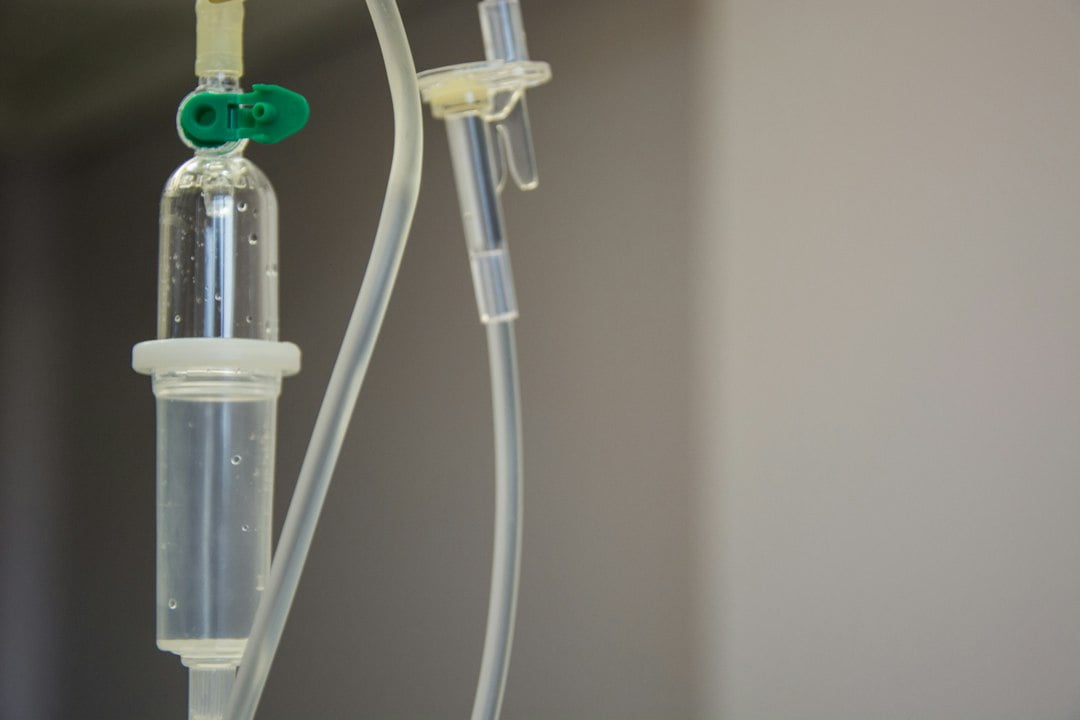
Stay Ahead of the Game: Preventive Health Measures for Effective Stroke Prevention
Preventive health measures play a crucial role in reducing the risk of stroke, a leading cause of death and disability worldwide. Stroke occurs when the blood supply to the brain is interrupted or reduced, leading to damage to brain cells. It can have devastating consequences for individuals and their families, as well as significant economic implications for society as a whole.
According to the World Health Organization (WHO), stroke is the second leading cause of death globally, responsible for approximately 11% of all deaths. In addition to the loss of life, stroke survivors often experience long-term disabilities that can impact their quality of life and ability to perform daily activities. The economic burden of stroke is also substantial, with healthcare costs and lost productivity totaling billions of dollars each year.
Key Takeaways
- Preventive health measures are crucial for effective stroke prevention.
- Identifying and managing risk factors is key to reducing the risk of stroke.
- Positive lifestyle changes, including a healthy diet and regular exercise, can significantly reduce stroke risk.
- Regular health check-ups and working with healthcare providers are important for stroke prevention.
- Understanding family history and genetics can also play a role in stroke prevention.
Risk Factors
Several risk factors contribute to an individual’s likelihood of experiencing a stroke. Some risk factors cannot be changed, such as age and gender. As people get older, their risk of stroke increases, with the majority of strokes occurring in individuals over the age of 65. Men are more likely than women to have a stroke, although women have a higher lifetime risk due to their longer life expectancy.
Family history also plays a role in stroke risk. If a close family member, such as a parent or sibling, has had a stroke, an individual’s risk is increased. This may be due to shared genetic factors or lifestyle habits within the family.
Certain medical conditions also increase the risk of stroke. High blood pressure, or hypertension, is the most significant risk factor for stroke. It damages blood vessels over time and increases the likelihood of blood clots forming. Other medical conditions that contribute to stroke risk include diabetes and heart disease.
Lifestyle factors also play a significant role in stroke risk. Smoking is one of the most preventable causes of stroke, as it damages blood vessels and increases the likelihood of blood clots forming. Excessive alcohol consumption can also contribute to stroke risk, as it raises blood pressure and can lead to other medical conditions. Physical inactivity is another lifestyle factor that increases the risk of stroke, as it contributes to obesity, high blood pressure, and other risk factors.
Lifestyle Changes
Making positive lifestyle changes is essential for reducing the risk of stroke. Quitting smoking is one of the most effective ways to lower stroke risk. Within just a few years of quitting, the risk of stroke decreases significantly. Limiting alcohol intake is also important, as excessive consumption can raise blood pressure and contribute to other medical conditions.
Regular physical activity is crucial for maintaining a healthy weight and reducing the risk of stroke. Engaging in aerobic exercise, such as walking, swimming, or cycling, for at least 150 minutes per week can have significant benefits for cardiovascular health. Strength training exercises are also important for maintaining muscle mass and overall fitness.
Maintaining a healthy weight is another key lifestyle change that can reduce stroke risk. Obesity increases the likelihood of developing high blood pressure, diabetes, and other medical conditions that contribute to stroke risk. By adopting a balanced diet and engaging in regular physical activity, individuals can achieve and maintain a healthy weight.
Managing stress levels is also important for reducing stroke risk. Chronic stress can contribute to high blood pressure and other risk factors for stroke. Practicing relaxation techniques, such as deep breathing exercises or mindfulness meditation, can help individuals manage stress more effectively.
Diet and Nutrition
| Category | Metric | Value |
|---|---|---|
| Macronutrients | Protein | Recommended daily intake: 0.8g per kg of body weight |
| Carbohydrates | Recommended daily intake: 45-65% of total calories | |
| Fat | Recommended daily intake: 20-35% of total calories | |
| Micronutrients | Vitamin C | Recommended daily intake: 75-90mg for adults |
| Iron | Recommended daily intake: 8-18mg for adults | |
| Dietary Guidelines | Vegetables | Recommended daily intake: 2.5-3 cups for adults |
| Added sugars | Recommended daily intake: less than 10% of total calories |
Diet plays a crucial role in preventing stroke. A healthy diet should include a variety of fruits and vegetables, whole grains, lean proteins, and healthy fats. These foods provide essential nutrients that support cardiovascular health and reduce the risk of stroke.
Fruits and vegetables are rich in antioxidants, vitamins, and minerals that help protect against damage to blood vessels and reduce inflammation in the body. Whole grains provide fiber and other nutrients that support heart health. Lean proteins, such as fish, poultry, and legumes, are important for maintaining muscle mass and overall health. Healthy fats, such as those found in nuts, seeds, and olive oil, can help lower cholesterol levels and reduce the risk of stroke.
Incorporating a healthy diet into daily life can be challenging, but there are several strategies that can help. Planning meals in advance, cooking at home more often, and choosing nutrient-dense foods can make it easier to maintain a healthy diet. It is also important to limit the consumption of processed foods, sugary drinks, and foods high in saturated and trans fats.
Physical Activity
Regular physical activity is essential for reducing the risk of stroke. Exercise improves cardiovascular health, lowers blood pressure, and helps maintain a healthy weight. It also reduces the risk of developing other medical conditions that contribute to stroke risk, such as diabetes and obesity.
Aerobic exercise, such as walking, jogging, or cycling, is particularly beneficial for cardiovascular health. Aim for at least 150 minutes of moderate-intensity aerobic exercise per week or 75 minutes of vigorous-intensity exercise. Strength training exercises should also be incorporated into the routine to build muscle mass and improve overall fitness.
Incorporating physical activity into daily life can be challenging, but there are several strategies that can help. Finding activities that are enjoyable and can be done with others can make exercise more enjoyable. Setting realistic goals and gradually increasing the intensity and duration of workouts can also help individuals stay motivated and make exercise a regular part of their routine.
Stress Management
Stress has been linked to an increased risk of stroke. Chronic stress can contribute to high blood pressure and other risk factors for stroke. Therefore, it is important to find effective ways to manage stress levels.
Practicing mindfulness meditation or deep breathing exercises can help individuals relax and reduce stress levels. Engaging in activities that bring joy and provide a sense of purpose, such as hobbies or spending time with loved ones, can also help reduce stress. It is important to prioritize self-care and make time for activities that promote relaxation and well-being.
Medical Management
Working with a healthcare provider is crucial for managing medical conditions that contribute to stroke risk. Regular check-ups and monitoring of blood pressure, blood sugar levels, and cholesterol levels can help identify and manage these risk factors.
Medications may be prescribed to control high blood pressure, lower cholesterol levels, or manage other medical conditions. It is important to take medications as prescribed and follow the healthcare provider’s recommendations for managing these conditions.
In some cases, additional treatments may be recommended to reduce stroke risk. For example, individuals with atrial fibrillation, a type of irregular heartbeat, may be prescribed blood-thinning medications to prevent blood clots from forming.
Screening and Testing
Regular health check-ups are essential for identifying and managing stroke risk factors. During these check-ups, healthcare providers may perform various screening tests and assessments to evaluate an individual’s risk of stroke.
Common screening tests include measuring blood pressure, checking cholesterol levels, and assessing blood sugar levels. These tests can help identify high blood pressure, high cholesterol, and diabetes, which are significant risk factors for stroke.
Additional assessments may be performed to evaluate an individual’s overall cardiovascular health. These assessments may include evaluating body mass index (BMI), waist circumference, and overall fitness level.
Family History
Family history plays a role in stroke risk. If a close family member has had a stroke, an individual’s risk is increased. It is important to understand family history and discuss it with a healthcare provider.
By understanding family history, healthcare providers can assess an individual’s overall risk of stroke and recommend appropriate preventive measures. They may recommend additional screening tests or lifestyle changes based on the individual’s family history.
Preventive health measures are crucial for reducing the risk of stroke, a leading cause of death and disability worldwide. By understanding the risk factors for stroke and making positive lifestyle changes, individuals can significantly reduce their risk. Adopting a healthy diet, engaging in regular physical activity, managing stress levels, and working with a healthcare provider to manage medical conditions are all important steps in stroke prevention. It is never too late to take action and make positive changes to reduce stroke risk.
FAQs
What is preventive health?
Preventive health refers to measures taken to prevent diseases or injuries before they occur. This includes lifestyle changes, regular check-ups, and vaccinations.
What is stroke prevention?
Stroke prevention refers to measures taken to reduce the risk of having a stroke. This includes managing high blood pressure, quitting smoking, maintaining a healthy weight, and exercising regularly.
What are the risk factors for stroke?
The risk factors for stroke include high blood pressure, smoking, diabetes, high cholesterol, obesity, and a family history of stroke.
How can high blood pressure be managed?
High blood pressure can be managed through lifestyle changes such as reducing salt intake, exercising regularly, and maintaining a healthy weight. Medications may also be prescribed by a healthcare provider.
What are some lifestyle changes that can reduce the risk of stroke?
Lifestyle changes that can reduce the risk of stroke include quitting smoking, maintaining a healthy weight, exercising regularly, and eating a healthy diet that is low in saturated and trans fats.
What is the role of regular check-ups in preventive health?
Regular check-ups can help detect health problems early, before they become more serious. This allows for early intervention and treatment, which can prevent the development of more serious health problems.
What is the importance of stroke prevention?
Stroke is a serious and potentially life-threatening condition. Preventive measures can reduce the risk of having a stroke, which can improve overall health and quality of life.


















